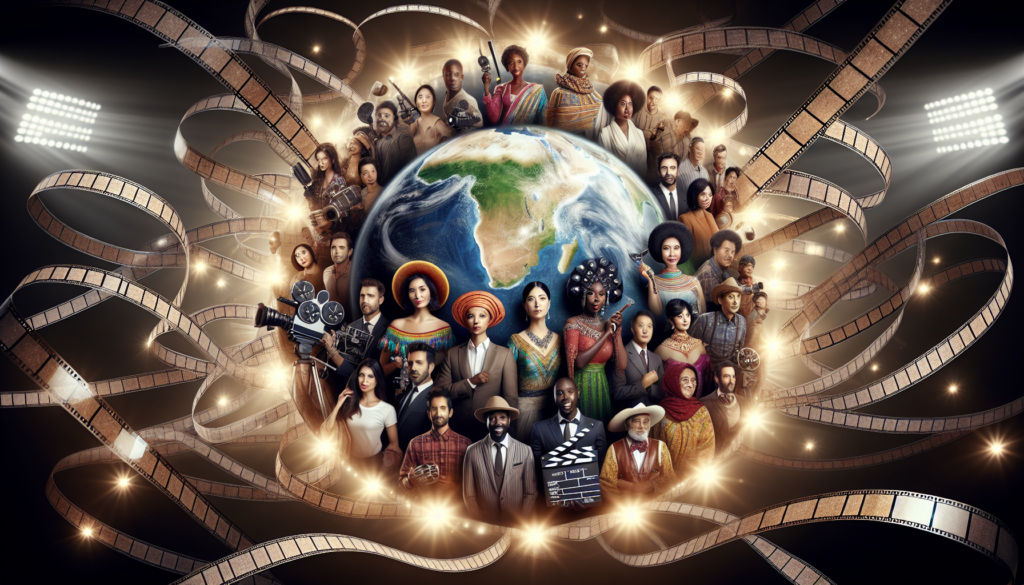The lens of stereotyping and typecasting has long clouded the vision of Hollywood’s filmmakers, a practice incessantly challenged in recent times. Nuanced performances delivered by actors breaking stereotype boundaries have been setting precedents, stoking conversations and pushing for a reinterpretation of the casting norms that have dominated for so long.
Historically, Hollywood has been blinkered, often pigeonholing actors into stereotypical roles based on their ethnicity, race, gender, age, or physical attributes. Asian actors were typically seen as technology wizards or martial arts experts, Black actors as slaves or gangsters, women were often typecast as love interests or caregivers, while older actors were assigned parental or grandparental roles.
Yet, we are currently witnessing a seismic shift in the world of cinema, prominently in Hollywood, a burgeoning cross-pollination where actors are subverting these stereotypes, embodying roles that challenge traditional expectations and conventions. This transformation has been setup by myriad trailblazing actors who have successfully broken these stereotypes, thus pushing the industry towards a more inclusive, diverse, and realistic casting norm.
Take Riz Ahmed‘s intense portrayal of a drummer losing his hearing in ‘Sound of Metal’, or the larger-than-life action hero role of Gal Gadot in ‘Wonder Woman‘, or even Morgan Freeman’s indelible turn as ‘God’ in ‘Bruce Almighty’. These roles are stark deviations from the boxes they were earlier forced into, owing to their respective ethnicity, gender, or age.
Brie Larson in ‘Room’, Jennifer Lawrence in ‘Winter’s Bone’, or Charlize Theron in ‘Monster’, all reflect Hollywood’s gradual departure from prescribing beauty standards for leading women. They eschewed the glamorous quotient, showcasing real, layered women fighting their circumstances while asserting their inherent strength and independence.
Black actors, previously enclosed within limited narratives and genres, are now starring in globally acclaimed diverse roles. Consider the nuanced portrayals of actors like Chadwick Boseman, Lupita Nyong’o, and Daniel Kaluuya, ranging from superheroes in ‘Black Panther‘, an FBI informant story in ‘Judas and the Black Messiah‘, to a social thriller like ‘Get Out‘.
Despite persistent ageism in Hollywood, many actors have defied this discrimination proving that age is not a barrier to delivering stunning performances. The explosive adaptation of Ian McKellen as action hero ‘Magneto’ in ‘X-Men‘, or the stoic and pragmatic Judi Dench as ‘M’ in James Bond series are perfect pointers of age-defiant roles. Not to forget, Glenn Close, who at 71 years, amazed audiences with her portrayal of a gritty woman living off the grid in ‘Hillbilly Elegy’.
Inclusivity has also touched the LGBTQ+ community with heartening shifts seen in recent years. This was acknowledged via groundbreaking performances like Timothée Chalamet and Armie Hammer‘s romantic leads in ‘Call Me By Your Name’ and Sean Penn’s immersive portrayal of gay rights activist Harvey Milk in ‘Milk’.
However, despite significant strides, the journey towards completely breaking stereotypes in Hollywood is far from ended. Truly breaking these norms would mean venturing beyond showcasing the marginalized as the ‘token’ diversity card.
In The Hollywood Diversity Report 2021, it was revealed that only 27% of leading roles in Hollywood’s top 200 grossing films are filled by minority actors and only 41% of films have women in leading roles. This highlights a stark but pivotal area of progress still needing focus and change.
A newer, refreshed Hollywood is in the making, one where actors are not merely conforming to-mold characters. Instead, they strive to give life to their ‘real’, resonant selves on screen, irrespective of their appearance, backgrounds, orientations, or ages. This perceptible shift, led by Hollywood’s brave and tenacious actors, is not just confined to celluloid. It undeniably presents a broader, stronger image of diversity, acceptance, and equal representation, redefining the social narrative.
These evolving norms of casting are instrumental in cultivating a more dynamic, authentic, and inclusive film industry. Actors breaking stereotypes serve to reshape society’s comprehension of the ‘protagonist’, ‘hero’, or ‘villain’. As we witness this awakening and embrace collaboration of different voices and storytelling mediums, the world can look forward to experiencing a more balanced cinematic landscape that is as diverse as its audiences.



